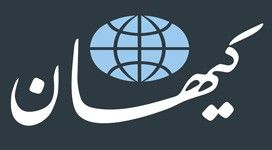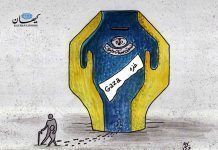June 16, 2017
By Mehdi Dehqan
Iran is currently in the midst of a severe economic crisis. The country has seen a record number of industrial and manufacturing plant shutdowns in the past few decades, as well as the bankruptcy of many major banks and financial institutions. To make matters worse, Iran is unable to attract foreign investment.
President Donald Trump’s recent visit to Saudi Arabia and concerted efforts to further isolate Iran in the region have discouraged many international banks from engaging in business with Iran. Debilitating Western sanctions and Iran’s exclusion from the global financial system have further exacerbated the problem.
Regional tensions have alarmed many western countries. German Foreign Minister Sigmar Gabriel has warned against a possible armed conflict between rivals Iran and Saudi Arabia. Former U.S. Secretary of State Hillary Clinton’s top national security and foreign policy advisor Jake Sullivan believes that there is a greater likelihood that the U.S. will go to war with Iran than with North Korea.
Conditions for foreign investment in Iran have been unfavorable for decades. Foreign investment fell sharply during former President Mahmoud Ahmadinejad’s term of office (2005-2013).
The United Nations Conference on Trade and Development (UNCTAD) released a report on 17 June showing foreign investment to be considerably higher in Turkey, South Korea, Saudi Arabia and Brazil than Iran. According to the report, only $3.3 billion was invested in Iran by foreign entities in 2016. Conversely, there are few opportunities for Iran to invest in Western industrial markets.
Rampant unemployment is another major contributing factor to Iran’s economic conditions. Unemployment soared even during Ahmadinejad’s presidency, when Iran enjoyed record oil revenues of $770 billion. There was a net loss of 185,000 jobs between 2005 and 2009. The same trends have prevailed throughout Hassan Rouhani’s presidency. The unemployment rate reached 12.7 percent in the summer of 2016.
Labour Minister Ali Rabiei claims that 600,000, 700,000 and 630,000 jobs were created in 2014, 2015 and 2016, respectively. During a television broadcast, Rabiei promised that at least 700,000 jobs would be created in 2017.
He reaffirmed this commitment at a news conference on May 8. Rabiei said: “The government is responsible for creating 970,000 new jobs every year until the end of 2021. We aim to lower the unemployment rate to 8 percent.”
However, the Research Center of the Majlis (Iranian Parliament) has published a report warning that the unemployment rate could, in the worst case, reach 26 percent by 2021.








![
تحریمهای آمریکا علیه جمهوری اسلامی پس از حمله به اسرائیل؛ سه شرکت تابع «گروه بهمن» در فهرست تحریمها قرار گرفتند
-دفتر کنترل داراییهای خارجی وزارت خزانهداری (OFAC) روز پنجشنبه ۱۸ آوریل (۳۰ فروردینماه) در واکنش به حمله موشکی و پهپادی جمهوری اسلامی به اسرائیل با صدور بیانیهای ۱۶ فرد و دو شرکت مرتبط با ساخت و تأدمین تجهیزات پهپادهای «شاهد» در ایران را تحریم کرد.
-این وزارتخانه همچنین پنج شرکت را به دلیل فراهم کردن مواد اولیه برای شرکت فولاد خوزستان و سه شرکت زیرمجموعه اتومبیلسازی «گروه بهمن» (شامل بهمن دیزل، ایران دوچرخ و شرکت شاسیساز ایران) را که از سپاه قدس و وزارت دفاع پشتیبانی میکردند در فهرست تحریمها قرار داد.
-وزارت خزانهداری آمریکا در بیانیه خود اعلام کرد، «ما امروز با هماهنگی بریتانیا و با مشورت شرکاء و متحدان، اقدام سریع و قاطعانهای برای پاسخ به حمله بیسابقه [رژیم] ایران به اسرائیل انجام میدهیم».
-دفتر صنعت و امنیت وزارت بازرگانی (BIS) نیز تحریمهای جدیدی را برای توقف دسترسی رژیم ایران به فناوریهایی مانند میکروالکترونیک اعمال کرد.
https://kayhan.london/1403/01/30/346962/](https://kayhan.london/wp-content/plugins/instagram-feed/img/placeholder.png)